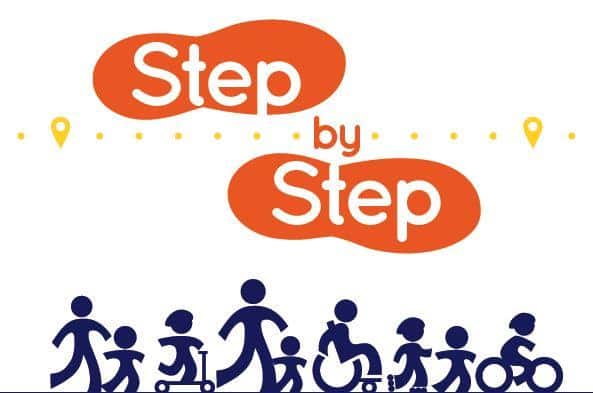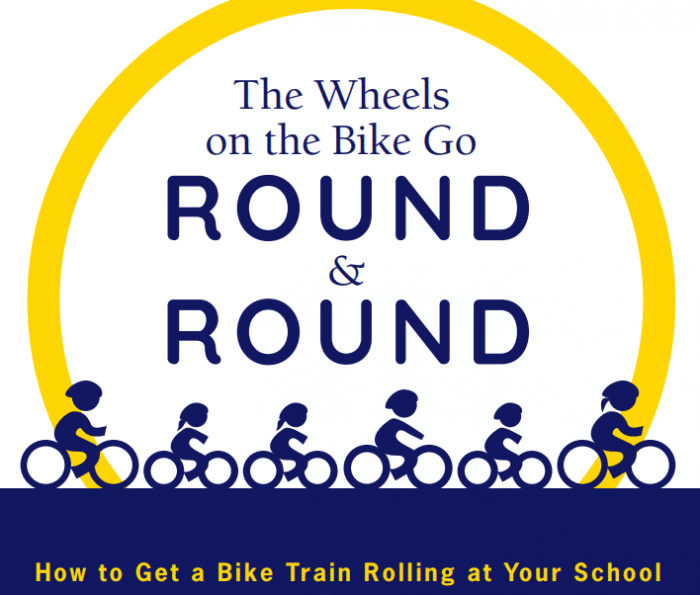Why Start a Walking School Bus/Bike Train
Many schools have found Walking School Buses and bike trains to be fun, low cost modes of school transportation. These programs exist across the country and have been documented to improve students’ behavior, physical health, and ability to learn, all while fostering community. Walking school buses and bike trains can also help with school transportation by minimizing the number of students that require bus service and reducing traffic congestion caused by personal vehicles.
What is a Walking School Bus/Bike Train
A Walking School Bus or Bike Train is a group of children walking or biking to school with one or more adults. It sounds simple because it is! Typically walking or biking groups range in size from just a few kids, to a dozen, with an appropriate number of adults to provide supervision. They can be structured like a regular bus by creating one or more meeting points, a timetable, and a regular schedule of volunteers.
Start Simple
Programs should start simple and can always change or grow as needs arise. Start with a single neighborhood that has parents and children who are interested and live nearby. It is like a carpool, without the car! Added benefits include exercise, fresh air, and being with friends.
For an informal bus:
1) Locate and invite nearby children to walk/bike with you.
2) Pick a route and take a test walk before school starts.
3) Decide in advance how often you will walk/bike together and what the return trip for each student will be.
4) Have fun!
Organize a One Day Event
Nationally, there are 2 dates every year when schools across the country celebrate together by organizing walk and or bike to school events. Walk & Roll to School Day takes place every October and Walk & Roll to School every May.
- The BCM can support your event by providing FREE safety education, via our statewide team of certified instructors, or by sharing printed or online safety materials. Request BCM Bike/Walk Safety Education using this form.
- Our partners at Walk, Bike & Roll to School offer additional information and tools to learn more about these special one-day events.
Start a Walking School Bus
Prepared by the Safe Routes to School National Partnership and funded by the CDC, this toolkit provides educators, parents, and community members with everything they need to plan and organize a walking school bus led by adult volunteers. This step-by-step guide outlines how to plan and implement a walking school bus for your school, and includes proven tools, tips, and resources for an easy start. Whether or not you are familiar with the Safe Routes to School and Walking School Bus Programs, this guide will get you moving in the right direction.
Start a Bike Train
This toolkit prepared by the Safe Routes to School National Partnership and funded by the CDC, provides educators, parents, and community members with everything they need to plan and organize a bike train. Additionally, this guide provides a simple description of how to plan and organize a bike train. It outlines initial planning considerations, logistics, promotion, training, and evaluation. The guide has tried-and-true methods, resources, and templates for an easy start that will get you on your way—pedaling toward a successful bike train program!
Strategies:
1. Emphasize WSB and BT programs as viable alternatives to bussing or driving.
2. Set up remote drop-off locations for students who live too far to walk the entire way, but wish to walk or bike part of the way. This also helps alleviate traffic congestion at the school.
3. Promote routes to schools that utilize streets that are closed or have reduced speeds.
4. Work with local businesses or community members to set up WSB and BT program leads and drop-off locations.
5. Consider safe ways to incentivize participation in a WSB or BT program. Work with educators or local businesses to get students or volunteers excited about being involved.
6. If a WSB or BT program isn’t possible at this time, consider offering “Safe Routes for All” recommendations that call out routes that are best for students and caregivers to use when walking and biking to school independently.
For more information, please contact Associate Education Manager, Erik daSilva. The BCM has a huge toolkit of ready-to-use posters, forms, and handouts that we look forward to sharing!


